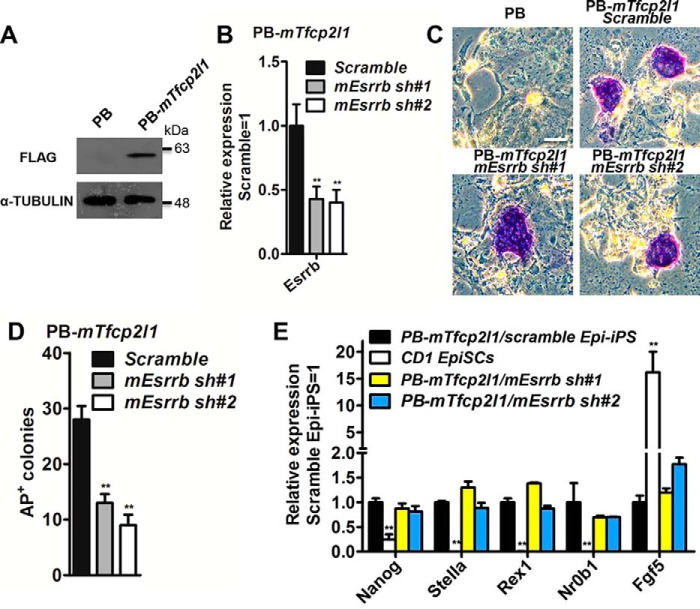Figure 3.
Esrrb plays an important role in the induction of naïve pluripotency downstream of mouse Tfcp2l1. A, FLAG-tagged mouse Tfcp2l1 (PB-mTfcp2l1) was introduced into CD1 EpiSCs, and the protein level of FLAG was determined by Western blotting. The cells were cultured in activin A, basic FGF, and IWR1 conditions. B, qRT-PCR analysis of Esrrb expression levels in mEsrrb knockdown EpiSCs overexpressed PB-mTfcp2l1. The data are presented as the means ± S.D. of three biological replicates. **, p < 0.01 versus scramble. C, AP staining of colonies generated from scramble control and mEsrrb knockdown EpiSCs transfected with PB-mTfcp2l1. The cells were cultured in serum medium in the presence of LIF/2i for 12 days. Bar, 100 μm. D, quantification of the AP-positive colonies generated from scramble and mEsrrb knockdown EpiSCs carrying the mTfcp2l1 transgene. The cells were cultured in serum medium supplemented with LIF/2i for 12 days. The data are presented as the means ± S.D. of three biological replicates. E, comparison of marker gene expression in the indicated Epi-iPS cells and EpiSCs. Nanog, Stella, Rex1, and Nr0b1 are mESC markers, whereas Fgf5 is an EpiSC marker. The data are presented as the means ± S.D. of three biological replicates. **, p < 0.01 versus CD1 EpiSCs. Epi-iPS, induced pluripotent stem cells generated from EpiSCs.

